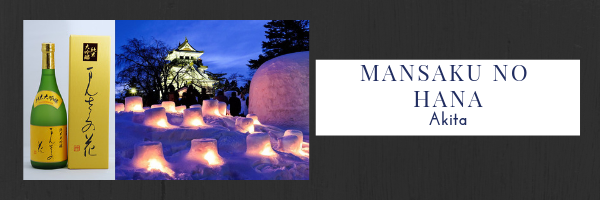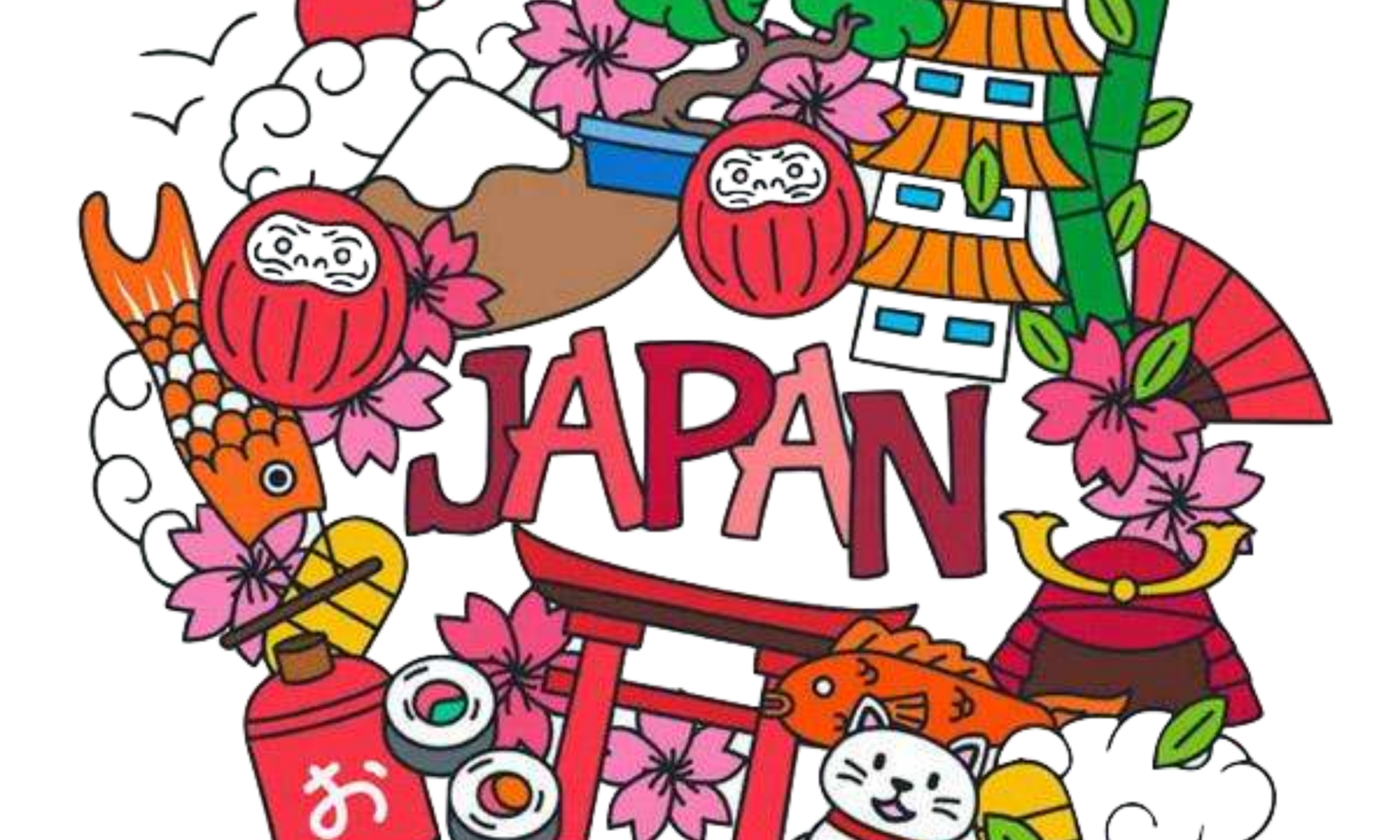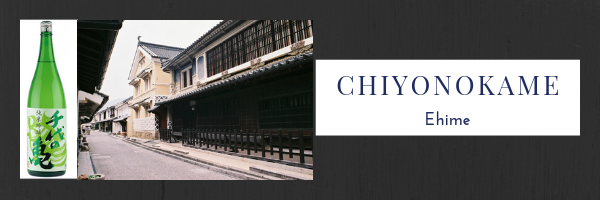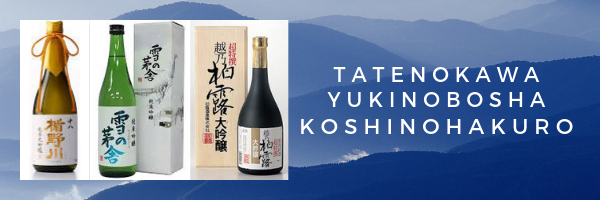You can taste Mansakunohana, Hinomaru Jozo Co., Ltd. from Akita prefecture, and Ichinokura, Ichinokura Co.,Ltd. from Miyagi prefecture.

Mansaku no hana (Hinomaru Jozo Co., Ltd.)
Hinomaru Jozo is located in Masudamachi, in Yokote city in the picturesque snow country of Akita, Japan. Akita has long, harsh, snowy winters. In the height of the winter season, Hinomaru Jozo’s touji (sake master) Ryoji Takahashi can be found with his hands buried deep in cold, mashed rice, preparing it for fermentation.
Like many older breweries and distilleries, Hinomaru Jozo follows traditions that date back to when it was first founded almost 330 years ago, in 1689. Something the Hinomaru Brewery is proud of is the usage of the “rising sun” imagery, 200 years prior to its official association with the Japanese flag and government. The logo and name were created by the feudal leader of the region at the time: Lord Satake.
But there is more to a distillery than a name and a logo. Their motto, coupling “quality first” with “challenging spirit,” reflects the rigorous process involved in concocting the perfect sake mix. Still to this day, everything is done by hand: the rice growing, harvesting, mashing, steaming, transferring, and bottling. One of the key elements that helps Hinomaru’s sake stand out is the usage of small, 1.8-liter bottles to store and age the sake, as opposed to more common practice of storing and aging sake in massive, 500 to 1000–liter barrels at other breweries. There is no better example of Hinomaru’s quality nihonshu than the Mansakuno Hana brand: named for the mansakuno flower and created to commemorate a popular NHK TV drama that was set in Akita, it can be found at restaurants around the world. An even more refined variety of this sake is the Mansakuno Hana Daiginjo, whose beautiful pale gold color matches its fruity aroma—like that of apples or pears.
The Akita snow is a crucial indirect ingredient: keeping the building cold and frosty creates a specific flavor and texture known only to Hinomaru’s brand-name sake. A crisp, sweet, fruity winter taste dominates their flavor profiles, and complements the famous sour pickled vegetables of the north. Winter in Akita is suddenly much less cold when it’s paired with a bottle of sake from Hinomaru Jozo.
The Yokote Kamakura Festival (横手の雪まつり, Yokote no Yuki Matsuri) has a history of about 450 years. It is held every year in mid-February. The festival features many igloo-like snow houses, called kamakura, which are built at various locations across the city. Along Yokote River, hundreds of small kamakura the size of lanterns are made. These mini kamakura are illuminated by candles from dusk until around 21:00 and create a lovely sea of lights.
During the Festival, you can enjoy walking around while enjoying Akita’s local delicacies and sake.
Hinomaru Jozo Co., Ltd. Home page
Tasting at home by amazon
Mansaku no hana Bekkaku Daiginjo 金賞受賞蔵!秋田のお酒、まんさくの花 別格大吟醸 720ml(四合)瓶 桐箱入

Ichinokura (Ichinokura Co.,Ltd.)
Ichinokura, a leading sake brewery in Japan, was founded in 1973 with the aspiration of leading the industry into the 21st century and promoting a sophisticated and vibrant sake drinking culture, through brewing high quality sake in Miyagi Prefecture. Four local sake breweries merged into one with a common goal in mind and strived to achieve this while assisting business and agriculture in Matsuyama, Osaki city.
They aim to establish a good relationship between their customers and Ichinokura employees, and develop the relationship between local communities and Ichinokura itself, by promoting a safe and prosperous style of living based on the fermentation technologies that they have acquired over time in harmonizing with people, nature and Japanese tradition.
Ichinokura headquarters and sake factories are located in the woody hill of Matsuyama, Osaki city, Miyagi prefecture, which is 243 miles (392 km) north of Tokyo. Their products have been enjoyed not only in Japan but also exported to more than 20 countries including the U.S.A. and throughout Asia. Ichinokura, maintaining the very spirit of its foundation, is putting tireless efforts into making the very best quality sake, which people will enjoy globally.
Ichinokura is fortunate to the three essential elements required to make the highest quality Japanese sake: water, rice, and expertise.
Naruko Gorge is in Osaki city. A large ravine surrounded by trees and rocky mountains that is 2.5km in length and 100m deep. In addition to the fresh green of spring to early summer, the autumn foliage from mid-October to mid-November is especially superb. There is an approximately 2.5km walking trail stretching from the entrance on the Naruko side to the Nakayamadaira entrance, where there is a viewing platform with an exquisite view. There are various walking paths and a train that goes through the gorge.
To relax in an onsen (hot spring bath) among breathtaking nature, Naruko area. Sake made in Miyagi Prefecture is the top class in Japan. You can taste Miyagi sake staying in ryokan (traditional Japanese inns).
Tasting at home by amazon
DATE AND TIME
2018/11/14 (Wed)~2018/11/20 (Tue) 10:00~20:00
You cannot go? Check out ichibansake Event Calendar
LOCATION
Seibu Ikebukuro B1F
〒171-0022 Tokyo, Toshima, Minamiikebukuro, 1 Chome−28−1
Access
Directly connect
Ikebukuro Station South Exit, Exit 38, Exit 36
Web site
For more information visit, 今週の酒と肴





